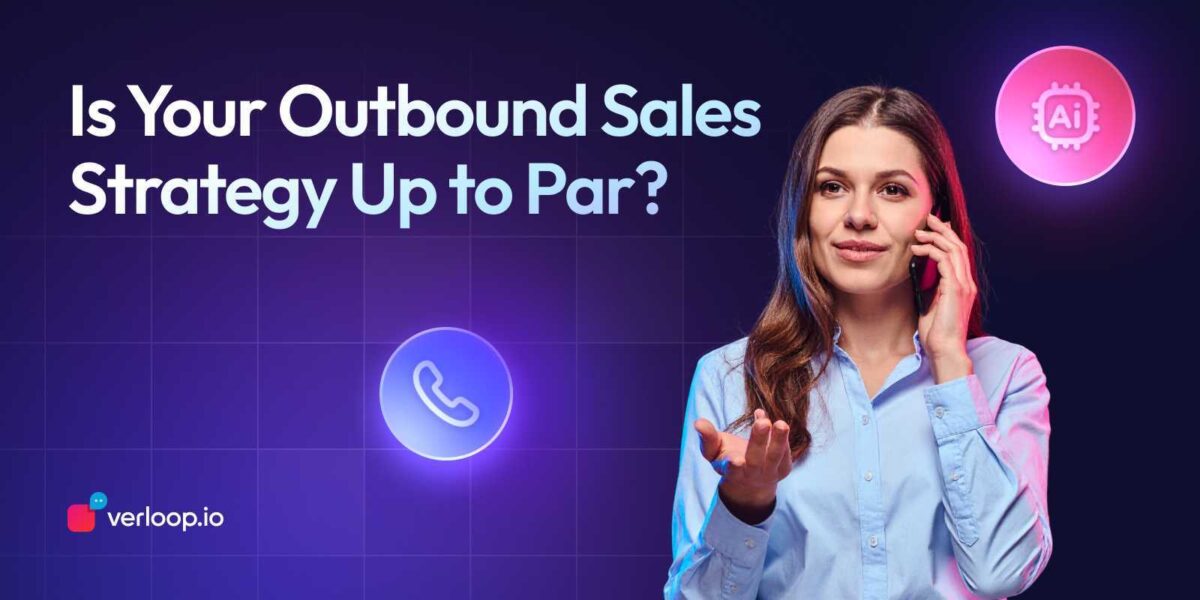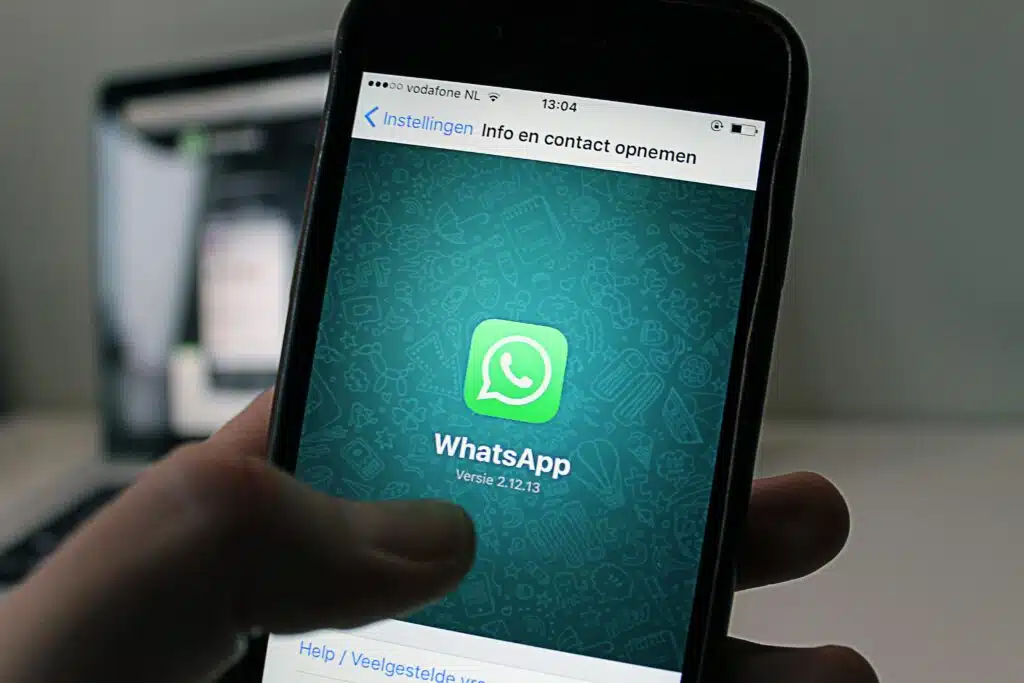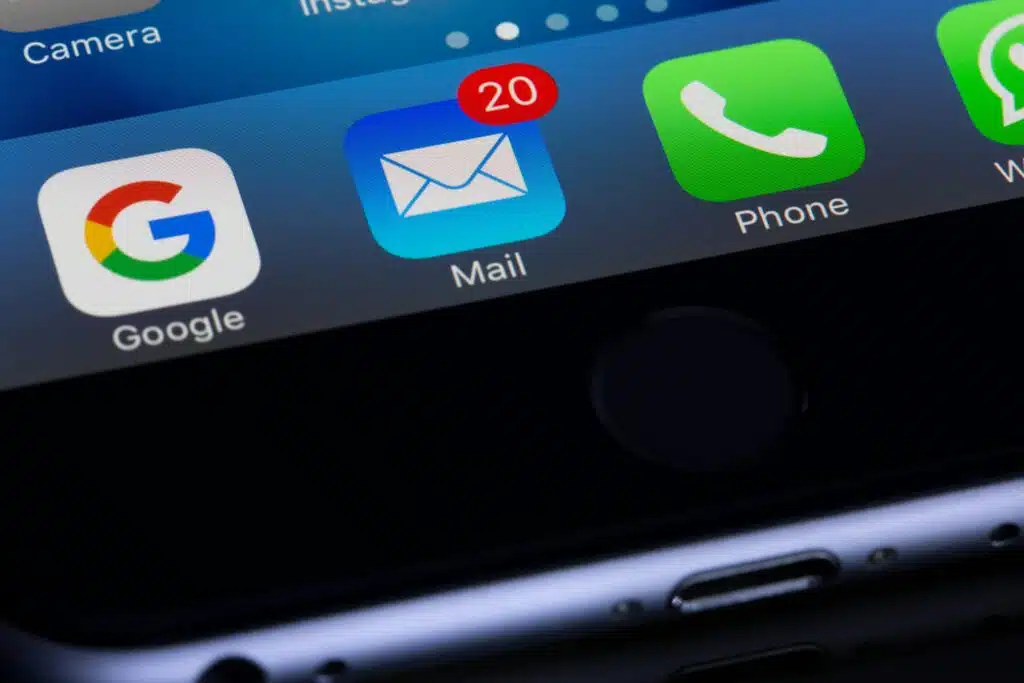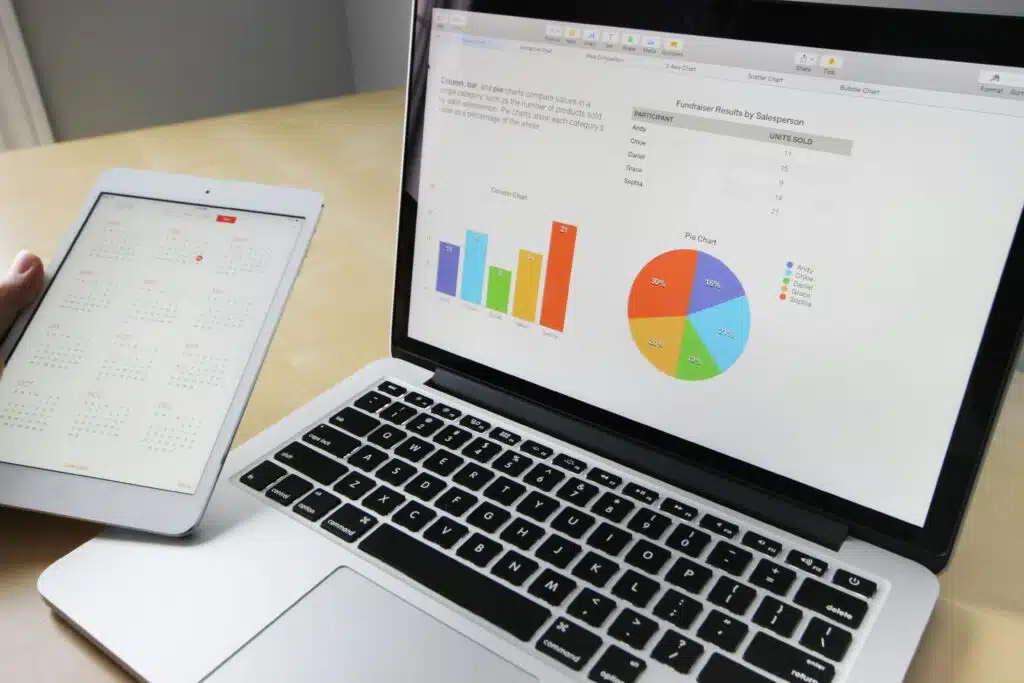Is Your Outbound Sales Strategy Up to Par? Uncover the Truth Behind Effective Outreach
- July 15th, 2025 / 5 Mins read
-
 Aarti Nair
Aarti Nair

Is Your Outbound Sales Strategy Up to Par? Uncover the Truth Behind Effective Outreach
- July 15th, 2025 / 5 Mins read
-
 Aarti Nair
Aarti Nair
If you’re running outbound sales the same way you did three years ago, chances are you’re leaving revenue on the table.
From cold calls to LinkedIn DMs to WhatsApp touchpoints, outbound has become a layered, intent-led game. And while many teams are still defaulting to the “spray and pray” method, smart businesses are getting ahead by optimising every interaction.
So, how do you know if your outbound strategy is actually working?
When asked, 62% of marketers say that their business’s outbound marketing efforts are effective. But ‘effective’ can be misleading. Are your efforts converting or just coasting? Are your SDRs connecting or simply contacting?
In this blog, we break down what a strong outbound strategy looks like in 2025, how to spot cracks in your approach, and what modern tools and tactics can help you get better results—without doubling your effort.
What Is an Outbound Sales Strategy?
An outbound sales strategy is when your team initiates contact with potential customers, rather than waiting for them to come to you.
In the world of sales, outbound strategies are essential for reaching new customers and driving business growth. While inbound marketing has its place, outbound sales allow companies to take a proactive approach in reaching potential clients.
Outbound sales involve reaching out to potential customers through various means, such as cold calls, emails, and social media outreach. It’s about making the first move to generate interest and build relationships. Understanding the nuances of outbound sales can significantly influence your team’s success.
It’s proactive, structured, and often layered across multiple channels:
- Phone calls,
- Cold emails,
- Social media messages,
- WhatsApp outreach,
- Events
- Direct mail.
The aim?
To spark a conversation, qualify interest, and eventually convert a lead into a customer.
Think of it as your team going out into the market, rather than waiting for the market to come to you.
But outbound today isn’t what it used to be.
Modern outbound strategies are less about volume and more about timing, targeting, and personalisation. You’re not just contacting leads, you’re doing it with context. A good outbound approach uses CRM insights, sales intent tools, and buyer behaviour data to frame smarter conversations.
It’s also measurable by tracking:
- Open rates,
- Response rates,
- Booking rates, and
- Conversion metrics
It helps in constantly iterating to improve outreach quality and conversion outcomes.
So while the concept is simple, that is, reach out and sell but the execution has evolved. And the most effective teams are those who treat outbound not as a sales tactic, but as a strategy built on data, tools, and empathy.
What Does a Strong Outbound Strategy Look Like Today?
Outbound sales serve a critical purpose in the business ecosystem. They enable companies to target specific segments of the market, reaching out to potential customers who may not yet be aware of their products or services. This approach allows businesses to expand their reach beyond organic traffic, tapping into new markets and opportunities. By proactively engaging with prospects, companies can build brand awareness and establish a presence in the minds of potential buyers.
1. Targeting the Right Prospects
Modern outbound starts with intelligent prospecting. It’s not enough to compile a long list of companies—sales teams need to identify which prospects are worth the effort.
Using firmographic filters like industry, company size, location, and tech stack is table stakes. But strong strategies go further. They incorporate intent data—signals like recent funding rounds, job postings, or website behaviour—to time outreach when the buyer is more likely to be receptive.
This leads to fewer wasted conversations and a higher chance of moving deals forward.
2. Multichannel Outreach
Your buyer isn’t confined to one platform, so your outreach shouldn’t be either.
A strong outbound strategy sequences touchpoints across email, phone, LinkedIn, WhatsApp, and more. The message adapts to each medium, but the value stays consistent. For example, a LinkedIn connection request can warm up a lead before an email lands. A call or voice note might follow to add a personal touch.
Multichannel doesn’t mean spam—it means strategic presence across platforms where your buyer is active.
3. Personalisation with Context
Surface-level personalisation isn’t enough. Adding someone’s name or job title won’t make your message stand out.
Effective outbound teams personalise outreach based on relevant context: the buyer’s recent LinkedIn post, a company announcement, or a known pain point in their industry. This signals to the prospect that you’ve done your homework—and builds trust faster.
The best reps weave in relevance, not just data.
4. Sharp, Outcome-Driven Messaging
Buyers don’t want a list of product features. They want to know: “How does this help me today?”
A strong outbound strategy focuses on outcomes from the first sentence. Instead of “Our platform helps streamline operations,” say, “Companies like yours cut support costs by 30% using our solution.”
It’s about showing tangible value—not selling the product, but the result.
5. Structured Follow-Up Cadences
Even the most compelling first message won’t always get a reply. That’s why structured cadences matter.
Successful outbound teams design sequences—5 to 10 touches over multiple channels—spaced over several days or weeks. Each follow-up brings something new to the table: a case study, a relevant insight, or a soft CTA.
This balance of persistence and value keeps you top of mind without becoming a nuisance.
Signs Your Outbound Strategy Isn’t Working
Understanding the psychology behind outbound sales can enhance your approach. At its core, outbound sales leverage psychological principles such as reciprocity, authority, and social proof to influence potential customers. For instance, offering valuable information or a free consultation can initiate a sense of obligation, encouraging prospects to engage further. Moreover, showcasing testimonials or endorsements from reputable sources can build trust and credibility, making prospects more likely to respond positively to your outreach efforts.
Even with the best tools and intent, outbound efforts can fall flat if certain warning signs are overlooked. These indicators suggest it’s time to reassess your approach before burning through your leads—or your sales team.
1. Low Open, Click, or Reply Rates
If your emails aren’t being opened or your InMails are going unread, it’s a clear sign something’s off. Maybe your subject lines aren’t compelling enough. Or your messaging isn’t relevant to the audience you’re reaching out to.
Even worse?
A low reply rate might mean your outreach sounds like a template, or it’s not building enough trust to earn a response. Either way, silence from your prospects speaks volumes.
2. Poor Lead-to-Meeting Conversion
Let’s say prospects open your messages—but aren’t booking calls. This points to a disconnect between the problem you’re highlighting and what they actually care about.
It may also reflect weak CTAs, unclear next steps, or a value proposition that doesn’t resonate. If your message gets attention but not action, it’s time to revisit what you’re offering—and how you’re positioning it.
3. Long and Stalled Sales Cycles
A drawn-out sales cycle isn’t just frustrating—it’s costly.
If leads engage but don’t move forward, it may be due to poor qualification upfront. Are you reaching out to someone who can actually make a decision? Is your outreach aligned with where they are in the buying process?
When deals stall, it’s often because outbound efforts aren’t tailored to buyer readiness.
4. High Bounce or Unsubscribe Rates
High bounce rates mean your data quality is poor, your prospect list is likely outdated or unverified. Meanwhile, if people are unsubscribing or marking you as spam, your frequency or tone might be off.
This isn’t just a performance issue; it can damage your domain reputation and future deliverability.
5. No Alignment Between SDRs and Marketing
Outbound isn’t just a sales activity—it works best when sales and marketing collaborate.
If your SDRs are targeting one persona while marketing is nurturing another, or your messaging feels disconnected across channels, prospects notice. Lack of alignment leads to confusion internally and missed opportunities externally.
Strong outbound starts with clarity: shared ICPs, consistent messaging, and visibility into what content is converting.
Common Mistakes to Avoid in Outbound Sales
Outbound sales isn’t just about sending messages and hoping for replies. If your results aren’t matching your efforts, chances are one or more of these common mistakes are holding you back.
1. Spray-and-Pray Outreach
Mass emailing without context might save time upfront, but it costs you trust—and results. Sending the same message to 5,000 leads without regard for industry, intent, or job role guarantees one thing: delete.
Sales isn’t a lottery. It’s strategic. Even if you’re reaching out cold, the message must feel like it’s written just for them.
And here’s the cost of poor targeting: only 2% of cold calls actually turn into a sale or lead. Not because cold outreach doesn’t work, but because irrelevant outreach rarely does.
2. Generic Messaging
Your prospects can smell a copy-paste pitch from a mile away. Messages that start with “Hope you’re doing well” and jump straight into a product pitch lack authenticity.
This is where personalisation matters—not just using a name or company, but showing you understand their specific challenge or goal.
When messaging doesn’t reflect the recipient’s world, it gets ignored. Worse, it damages brand perception.
3. Ignoring Lead Intent Signals
Every action—downloading a whitepaper, visiting a pricing page, attending a webinar—is a signal. Ignoring these is like stepping over warm leads to chase cold ones.
Outbound teams that don’t integrate behavioural signals into their outreach strategy miss the opportunity to strike when interest is high.
Remember: 60% of reps don’t hit their quotas. Often, it’s not due to effort, but because effort isn’t aligned with real buying signals.
4. Poor Follow-up Cadence
One email isn’t enough. Two calls won’t cut it. Many reps give up too early—usually after 1–2 attempts. But research shows that making a few extra follow-ups can improve conversion rates by 70%.
Persistence isn’t pestering—it’s professionalism, especially when combined with value-led communication. A structured follow-up cadence (with a reason for every reach-out) is key.
5. Not Segmenting Leads by Stage or Behaviour
Treating all leads the same, regardless of whether they’re just learning or already comparing solutions, leads to mismatched conversations.
You wouldn’t speak to someone who just subscribed to your newsletter the same way you’d talk to a demo attendee—yet many outbound strategies do just that.
Segmentation allows for smarter messaging, better timing, and higher conversions.
And keep in mind: 92% of unidentified calls are considered spam or fraud. When your outreach lacks context, it’s dismissed before it even lands.
Modern Channels & Tactics That Work for Outbound Sales Strategy
Sales teams now have access to a plethora of tools that streamline their processes and improve efficiency. Customer Relationship Management (CRM) systems, for example, enable teams to manage leads, track interactions, and analyse data effectively. Additionally, automation tools can handle repetitive tasks such as follow-up emails, allowing sales representatives to focus on more strategic activities.
Leveraging these technologies not only saves time but also enhances the accuracy and effectiveness of outbound sales campaigns.
Outbound sales has evolved far beyond cold calls and generic email blasts. The modern buyer expects relevance, speed, and context—and today’s best-performing sales teams are meeting them where they are, with the tools they prefer.
Here’s a breakdown of effective outbound channels and tactics that actually work today:
1. LinkedIn Voice Notes & InMails
LinkedIn isn’t just for networking—it’s a goldmine for outbound, especially when used with nuance.
Instead of sending a cold InMail that reads like a brochure, smart sales reps are sending short, informal voice notes. Why does it work? It cuts through the text-heavy clutter and brings a human tone to a cold interaction.
Voice adds emotion, tone, and trust—making it harder to ignore. Combine that with a well-structured InMail strategy (using mutual connections, engagement history, or shared interests), and you’ve got a powerful entry point.
2. WhatsApp for High-Intent Touchpoints
If your leads are in markets like India, MENA, LATAM, or Southeast Asia, WhatsApp is where conversations convert.
Rather than jumping straight to calls, businesses are using the WhatsApp Business API to engage warm leads—sending appointment reminders, personalised product info, or even voice messages.
It’s personal. It’s fast. And it works because it’s native to the user’s behaviour. When used right, it’s not intrusive—it’s helpful.
3. Warm-Up Sequences via Email Before the Pitch
Ever walked into a cold room and tried to sell? It doesn’t work well.
That’s why modern teams warm up prospects with valuable content before asking for time. Think of it as “priming” the audience with a sequence of micro-touchpoints—industry insights, a helpful guide, or a stat-packed case study.
By the time you pitch, you’re not a stranger. You’re already seen as someone who brings value.
4. AI-Powered Tools for Intent Detection and Personalisation
AI is no longer a nice-to-have. It’s your research assistant, data analyst, and messaging coach—all rolled into one.
Sales teams are using AI tools to:
Detect buying signals from web activity or CRM behaviour
Personalise outreach messages based on role, industry, and pain points
Score leads and prioritise follow-ups intelligently
Instead of guessing, you now have data-backed direction—and that means fewer wasted dials and better close rates.
5. Video Prospecting & Voice AI Agents for Qualification
A 30-second video can do what 5 emails can’t—capture attention, convey emotion, and show you’re human.
Reps are sending personalised videos (via tools like Loom or Vidyard) introducing themselves, addressing specific pain points, and inviting a response. These are especially useful when engaging decision-makers who ignore traditional pitches.
On the flip side, Voice AI agents are being deployed to handle the first layer of qualification, making calls, asking pre-set questions, and routing only warm leads to the human team. It’s a productivity boost without compromising customer experience.
Key Metrics to Track Success in Outbound Sales
You can have the best message, slickest tech stack, and a well-trained sales team—but if you’re not measuring the right metrics, you’re flying blind.
Modern outbound isn’t just about volume anymore. It’s about quality, efficiency, and conversion across each touchpoint. Here’s how to gauge if your strategy is actually working:
1. Reply Rate vs Open Rate
Open rates alone won’t cut it anymore—especially with email privacy settings skewing the numbers. The real gold lies in reply rates.
If people are responding, even to say “not now,” you’ve struck relevance. Low replies and high opens? Your subject lines work, but your messaging doesn’t.
Track this to tweak your message hooks, CTAs, and targeting.
2. Meetings Booked Rate
How many of your cold touches actually lead to a booked call?
This metric tells you whether your messaging not only grabs attention, but motivates action. It also highlights the quality of your leads and the timing of your outreach.
Use this to refine your ICP, experiment with CTAs, and test timing windows.
3. Time-to-Conversion
Outbound can take longer than inbound—but it shouldn’t take forever.
Tracking how long it takes for a lead to go from first touch to conversion helps you identify bottlenecks in your nurturing process. Are reps taking too long to follow up? Is the prospect stuck in qualification limbo?
Find delays, and fix them fast—whether it’s workflow automation or sales enablement.
4. Lead-to-Close Rate
It’s not about how many people you reach. It’s about how many deals you close.
Lead-to-close rate is the ultimate reality check. If this number is low, revisit your qualification criteria, outreach strategy, and how well marketing and sales are aligned.
This helps prioritise high-quality outreach and surface training needs for your team.
5. Channel-Specific Performance
Not all channels are created equal. WhatsApp might outperform email for SMBs in MENA. LinkedIn might crush it in the B2B SaaS space. Cold calling might still work in financial services.
Track performance by channel—open rates, reply rates, conversions—to double down on what works and kill what doesn’t.
Channel attribution helps optimise effort and budget allocation.
The bottom line?
Don’t just track what’s easy. Track what actually tells the story of your sales performance.
How to Create an Outbound Sales Strategy That Actually Works?
Crafting a robust outbound sales strategy involves several key components. By focusing on understanding your audience, setting clear goals, and creating a streamlined sales funnel, you can ensure your efforts are both effective and efficient.
Crafting a solid outbound sales strategy isn’t just about sending cold emails or dialling numbers. It’s about building a system that connects with the right people, at the right time, with the right message—and then turning those conversations into conversions.
Here’s a step-by-step breakdown:
1. Define Your Ideal Customer Profile (ICP)
Before launching any campaign, it’s crucial to know who you’re targeting. Identifying your ideal customer profile helps tailor your outreach efforts to those most likely to benefit from your product or service.
Developing detailed buyer personas is an integral part of defining your target audience. These personas are semi-fictional representations of your ideal customers, based on market research and real data about your existing customers. They include demographics, behaviours, motivations, and challenges. By understanding these aspects, you can craft messages that resonate on a personal level, addressing specific pain points and needs. This personalised approach enhances engagement and increases the likelihood of conversion.
our ICP should go beyond vague job titles and industry labels. Include:
Company size and location
Buying intent and tech stack
Decision-making power
Pain points they typically face
Their stage in the buying journey
Audience segmentation is the process of dividing your target market into distinct groups based on shared characteristics. This could include factors like industry, company size, location, or buying behaviour. By segmenting your audience, you can create tailored marketing messages that speak directly to each group’s unique needs and interests. This targeted approach ensures that your outreach efforts are relevant and impactful, maximising the chances of a successful engagement.
2. Build a High-Quality Lead List
A targeted ICP is only useful if your lead list matches it. Use tools like Apollo, ZoomInfo, or LinkedIn Sales Navigator to build your list. Prioritise verified emails, phone numbers, and key decision-makers. Don’t just rely on job titles—layer in tech stack, funding stage, and recent company activity. Scrub your list regularly to avoid bounce rates and spam traps.
3. Craft Multi-Touch, Multi-Channel Sequences
Sales isn’t one-and-done. It’s a process. Build outreach cadences that mix email, phone calls, LinkedIn messages, and WhatsApp (where relevant). A typical 12–15 day sequence could look like:
- Day 1 email,
- Day 2 LinkedIn request,
- Day 4 call,
- Day 6 email, and so on.
Each message should build on the last—don’t repeat yourself.
4. Nail Your Messaging
Write like a human, not a brochure. Personalise your message using details like industry news, recent funding, or job changes. Keep subject lines short and curiosity-driven. Don’t pitch in your first message—build rapport first. Try frameworks like AIDA (Attention, Interest, Desire, Action) or PAS (Problem, Agitation, Solution) to structure your copy.
You can use the data for the same. Data analytics plays a crucial role in understanding your target audience. By analysing data from various sources such as website analytics, social media interactions, and customer feedback, you can gain valuable insights into your audience’s preferences and behavior. This data-driven approach allows you to refine your strategies and make informed decisions about your outreach efforts. By continuously monitoring and analyzing this data, you can stay attuned to changes in your audience’s needs and adapt your strategies accordingly.
5. Set Up the Right Tools & Automation
Use a sales engagement platform (e.g., Outreach, Salesloft, or Lemlist) to automate cadences, track replies, and optimise performance. Integrate your CRM for context-rich outreach. Tools should work for you, not overwhelm you—so avoid bloated stacks. Ensure every automation feels personal.
6. Align With Marketing and Customer Success
Outbound shouldn’t operate in a silo. Work with marketing to get tailored case studies, one-pagers, and awareness campaigns that warm up leads. Loop in customer success to surface upsell/cross-sell opportunities or identify churn signals you can address early. Quarterly syncs across teams can make outbound smoother and smarter.
How to Optimise and Scale Your Outbound Sales Strategy
Once your outbound engine is up and running, the next big hurdle is consistency and scale. It’s one thing to run a good campaign—quite another to do it again (and again) across teams, territories, and quarters. So, how do you take your strategy from scrappy to scalable?
Let’s break it down.
Start with Clear, Aligned Goals
Scaling outbound starts with knowing what you’re scaling towards. That means defining specific, measurable goals—grounded in what the business actually wants to achieve. Are you looking to drive demo requests in a new market? Push adoption in a specific vertical? Hit a revenue milestone?
Vague goals like “increase outreach” won’t cut it. Instead, aim for clarity:
📌 “Increase qualified leads by 20% in Q3 through targeted outreach to mid-market fintechs.”
The more aligned your sales goals are with overall business strategy, the easier it becomes to prioritise efforts, allocate budgets, and motivate teams around shared success.
Track the Right KPIs (And Review Them Often)
You can’t optimise what you don’t measure. Outbound sales is a fast-moving, feedback-rich function—yet many teams wait until end-of-quarter reviews to analyse performance.
Don’t.
Set up weekly dashboards with key metrics like:
Response rate
Conversion rate by touchpoint
Lead-to-opportunity ratio
Cost per acquisition
Time to first response
These insights help you spot patterns early, double down on what’s working, and pivot quickly if needed.
Use Hybrid Selling as Your Default
Outbound isn’t just about calls and emails anymore. It’s a mix of channels, tools, and touchpoints—and the most effective teams embrace this hybrid approach.
In fact, McKinsey reports that 9 in 10 companies are now adopting hybrid sales models, and those doing it well see up to 50% higher revenue growth compared to single-channel teams.
So what does hybrid actually look like in practice?
Think:
- Automated follow-ups + human-led consultative calls
- WhatsApp reminders + email nudges
- AI scoring + SDR intuition
Done right, hybrid selling feels seamless for the buyer and efficient for your team.
Automate at Scale—but Keep it Personal
The goal of automation is to save time—not strip away humanity. Use tools like Outreach, Apollo, or HubSpot to automate workflows and cadence—but make sure each touchpoint still feels tailored.
A personalised subject line. A reference to their recent blog post. A callback to a prior conversation. These small details have a big impact—and can be baked into templates without becoming robotic.
In short: automate process, not personality.
Codify What Works and Replicate It
Once you find your groove—whether it’s a winning email script, call opener, or LinkedIn DM format—capture it. Create a central playbook with templates, objection-handling responses, and follow-up flows.
Why?
Because consistency is what allows you to scale sustainably. New SDRs can ramp faster, campaigns stay on-brand, and you remove guesswork from execution.
Think of it like franchising your top-performing rep across the team.
Treat Every Campaign as an Experiment
Scaling is not about doing more of the same. It’s about learning what works, and constantly refining it. Run A/B tests on subject lines. Try different CTA placements. Experiment with new time slots, message formats, and channel combinations.
Treat your outbound motion like a marketer would a paid ad campaign—where iteration is key, and nothing is final.
Over time, these small experiments compound into a much smarter outbound machine.
How to Create a Sales Funnel for Outbound Sales Strategy
A well-defined sales funnel is the foundation of an effective outbound sales strategy. It helps you track your prospect’s journey from the first point of contact to final conversion—allowing your team to apply targeted tactics at every stage to drive results. By structuring and optimising your sales funnel, you ensure that your leads are not just gathered, but nurtured and moved toward a purchase with purpose.
1. Understand the Sales Funnel Stages
The typical sales funnel comprises six key stages:
Awareness: When prospects first learn about your offering.
Interest: When they begin to show curiosity about your solution.
Consideration: When they compare your product with alternatives.
Intent: When they show signs of buying, like requesting a demo.
Evaluation: When they weigh the benefits against the investment.
Purchase: When they become a customer.
Each stage demands specific content and outreach tactics. By mapping your sales journey accordingly, you can create highly tailored campaigns that resonate with where your prospects are in the decision-making cycle.
2. Refine Sales Prospecting Techniques
Sales prospecting is the gateway to your funnel. Use tools like LinkedIn, industry databases, company websites, and advanced filters to identify high-quality leads. Boolean search operators can help you get more precise results and build a qualified prospect list.
Don’t stop at names and emails—dig into pain points, job roles, and industry challenges. Conducting competitor analysis can also help identify whitespace in the market and prospects already interested in similar offerings. Additionally, leverage social listening tools to catch relevant conversations and respond meaningfully.
3. Attract and Capture Leads Effectively
To draw leads into your funnel:
Offer free trials, webinars, or gated content like whitepapers and reports.
Launch interactive campaigns—quizzes or assessments that engage users and gather useful data.
Use exclusive offers to create urgency.
All these tactics provide tangible value while building a qualified lead database. Make sure to tailor content to specific personas to improve engagement and conversion.
4. Organise and Qualify Your Leads
Once you’ve captured leads, segment them using CRM tools. Group them by buying intent, company size, or behaviour. Maintain clean, updated contact records with job roles, last touchpoints, and custom notes.
Prioritise leads using a scoring model that considers engagement, decision-making power, and industry fit. This ensures your outreach efforts are directed at prospects with the highest conversion potential.
5. Personalise Outreach at Scale
Generic sales pitches won’t cut it. Tailor your messaging based on what you know about the lead:
Reference relevant trends, case studies, or their business challenges.
Use personalisation tools to auto-fill names, titles, or industries.
Maintain a conversational tone and build trust by offering valuable insights.
Pay attention to subject lines—they affect open rates. Use curiosity, urgency, or clear value to stand out in crowded inboxes.
6. Create Clear and Compelling CTAs
Each message—whether an email, cold call, or LinkedIn message—should lead the prospect to a next step. A good CTA might be “Book a quick call,” “See how we did this for [Competitor],” or “Download our buyer’s checklist.”
Ensure your emails are short, value-driven, and scannable. Highlight benefits, not just features, and structure content to respect the recipient’s time.
7. Master Cold Calling and Email Sequences
Cold calling still works—when done right:
Prepare a flexible script.
Use open-ended questions and active listening.
Track objections and refine messaging accordingly.
With email, segment your list and create a follow-up sequence with value-driven messages. Use tools to track open and click-through rates, then adjust subject lines or CTAs based on real-time insights.
8. Leverage Social Media and LinkedIn
Be where your prospects are. Use LinkedIn to:
Connect with decision-makers.
Share useful content that positions you as a thought leader.
Engage in conversations through comments and DMs.
Consistency is key—your content should educate, not just promote.
9. Optimise the Funnel Continuously
To maximise conversions:
Run A/B tests for email subject lines or CTAs.
Track drop-off points at each stage.
Collect qualitative and quantitative feedback.
Optimisation is ongoing. Use funnel metrics like conversion rates, sales cycle length, and ROI to measure success and adjust strategy.
A well-structured and continuously optimised sales funnel can drive impressive results in outbound sales. From the moment a lead enters the funnel to the point of conversion, every interaction should be intentional, data-driven, and customer-centric.
Next up, we’ll explore how to align your sales and marketing teams to accelerate funnel movement and improve pipeline velocity.
How to Align Your Sales and Marketing Teams to Accelerate Funnel Movement
A misaligned sales and marketing team is like a relay race where the baton gets dropped mid-hand-off. To accelerate pipeline velocity and ensure your funnel isn’t just full—but flowing—you need these two functions to run in sync.
1. Start with Shared Goals and KPIs
Sales and marketing often work toward the same end result (revenue), but measure success differently. Sales looks at deals closed. Marketing looks at leads generated.
To bridge the gap:
Define shared objectives like qualified lead volume, opportunity-to-close ratios, or average deal size.
Set joint KPIs such as Marketing Qualified Leads (MQLs), Sales Qualified Leads (SQLs), pipeline velocity, and lead-to-win rates.
This creates accountability and ensures both teams are rowing in the same direction.
2. Build a Unified Ideal Customer Profile (ICP)
Marketing might target mid-level managers based on industry segments. Sales might be talking to C-suite decision-makers from a completely different niche.
To avoid such misfires:
Create a shared ICP with attributes like industry, company size, buyer role, pain points, and budget.
Regularly revisit and refine this profile based on win/loss analysis and real customer data.
This alignment helps marketing attract the right leads—and gives sales a stronger chance to convert them.
3. Agree on Lead Qualification Criteria
Ever heard sales say, “These leads are useless”? That’s often a sign of misaligned qualification standards.
To fix this:
Collaboratively define what makes a lead “qualified.”
Use frameworks like BANT (Budget, Authority, Need, Timeline) or CHAMP (Challenges, Authority, Money, Prioritisation).
Automate lead scoring using CRM tools and real engagement data.
When both teams agree on what a sales-ready lead looks like, handovers become smoother—and your funnel flows faster.
4. Establish Feedback Loops
Marketing needs to know which campaigns bring in the right kind of leads. Sales needs real-time data on how those leads are engaging.
Here’s how to make that happen:
Set up bi-weekly stand-ups between the two teams.
Share win/loss reasons, objections heard during calls, and campaign performance.
Use this data to refine messaging, targeting, and content strategies.
A strong feedback loop shortens the learning curve and improves conversion rates.
5. Co-Create Content That Sells
Sales enablement doesn’t mean handing over a generic product deck. It means giving reps the right content for every funnel stage.
Marketing can support sales by creating:
Personalised email templates
Industry-specific case studies
Competitive battle cards
Objection-handling scripts
This not only empowers sales to close faster but also ensures your messaging stays consistent across touchpoints.
6. Leverage a Shared Tech Stack
Your CRM, marketing automation tools, and sales engagement platforms should talk to each other. Siloed tools lead to fragmented customer journeys.
Ensure both teams use:
A shared CRM for tracking lead activity
Analytics dashboards with real-time funnel visibility
Automation workflows to reduce manual follow-ups and errors
Unified tools = unified strategy.
Turning Strategy into Sustainable Growth
An effective outbound sales strategy isn’t just about making calls or sending emails—it’s about creating a repeatable, measurable system that guides prospects from awareness to action. A well-defined sales funnel gives structure to this system. When paired with aligned sales and marketing teams, personalised outreach, and continuous optimisation, it transforms outbound from a numbers game into a high-conversion engine.
But outbound success doesn’t stop at implementation. It requires regular check-ins with your metrics, open feedback loops across teams, and the agility to adjust as buyer behaviour evolves.
Whether you’re building your strategy from scratch or refining an existing one, the principles laid out in this guide will help you move faster, close smarter, and grow sustainably. Your funnel isn’t just a path to revenue—it’s a reflection of how well you understand and serve your prospects at every stage.
Stay consistent.
Stay curious.
And keep moving forward.
FAQs
1. What’s the difference between inbound and outbound sales?
Outbound sales involve proactively reaching out to potential customers through channels like cold calls, emails, and LinkedIn outreach. Inbound sales, on the other hand, rely on leads that come to you through marketing efforts like content, SEO, or ads.
2. How long does it typically take to see results from an outbound strategy?
It depends on your industry and deal cycle, but most teams begin to see meaningful traction within 3–6 months, especially if the strategy includes personalised outreach, consistent follow-ups, and clear performance metrics.
3. How do I know if my outbound sales funnel is working?
Track conversion rates across stages, sales velocity, email response rates, and closed deals. If leads are consistently progressing and your close rates are improving, it’s a strong indicator your funnel is healthy.
4. Do I need a large team to run an outbound strategy?
Not necessarily. Many companies start with one or two SDRs using automation tools and clear ICPs (ideal customer profiles). The key is targeting the right prospects and refining your approach as you scale.
5. How can sales and marketing work together in outbound sales?
By aligning on ICPs, messaging, content strategy, and lead hand-off criteria. When both teams collaborate on pipeline goals, campaign planning, and feedback loops, it accelerates funnel movement and improves conversion rates.










